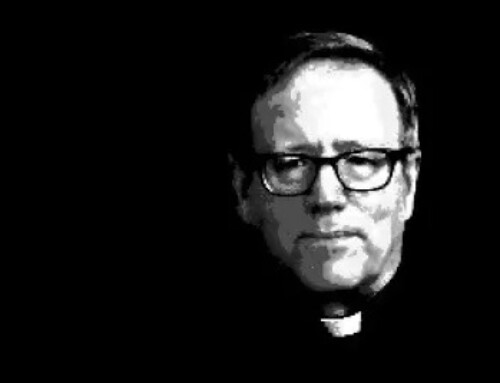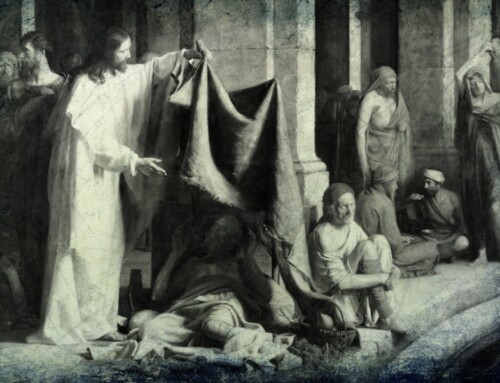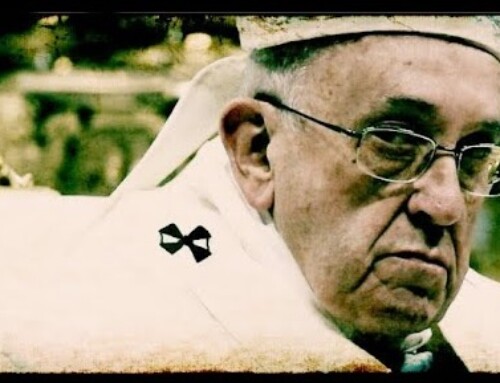Above: “Study for a Head,” by Francis Bacon, 1952.
“When I was in sin, the sight of lepers nauseated me beyond measure; but then God himself led me into their company, and I had pity on them.” – St. Francis of Assisi
I have lived during two epidemics: AIDS and COVID-19. Since the AIDS epidemic began (up until 2015), an estimated 311,087 gay men with an AIDS diagnosis have died in the US; 37.9 million people have died worldwide due to AIDS. One of the most ominous projections for US deaths due to COVID-19 is more than 80,000 victims; other estimates range from 100,000-200,000. Both the reality of AIDS and the estimated deaths from COVID-19 are almost unimaginable. But one of the differences between the two – the AIDS deaths in gay men severely affected only about 2% of the US population, while the much lower worst-case-scenario of the COVID-19 virus will be among the entire population. One isn’t worse than the other, although AIDS seriously impacted a smaller proportion of the country – with a higher number of deaths. However, the ways in which this epidemic affected the gay male community might give some indication how the US population will emerge from the current crisis.
In 2015, LGBT activists celebrated the Supreme Court decision of Obergefell v. Hodges which legalized same-sex marriage; this event was heralded as the culmination of the gay rights movement which officially began in 1969 with the Stonewall Riots. I had a somewhat different reaction. I “came-out” in 1988 – probably the unfortunate time to do so in modern history as AIDS deaths among gay men was skyrocketing. But, at the time, I felt it was necessary in order to make a statement of solidarity with the community and especially with those who were sick and dying. I believed that those who had died were martyrs. I thought they had died for us. This sentiment was expertly realized in the 1993 film version of Randy Shilts’ “And the Band Played On:”
“Now for years and years and years people in my hometown were telling me I was a freak because of my sexual orientation, until I came to San Francisco, and I found a community of freaks just like me…but I know speaking for most of us, I would rather die as a human being than continue living as a freak.”
By then, many of the deceased had been memorialized in the “AIDS Quilt.” Through the early-1990s, AIDS deaths among gay men continued to increase until 1994 and the introduction of life-saving antiretrovirals. Already, there were two seemingly opposed movements in the larger LGBT community: particularly in gay men – there was a noticeable swerve towards bondage and sadomasochism; conversely, another group, that also incorporated a number of lesbians, embraced a strange form of rather conservative domesticity and the trappings of monogamy. On one side there were representatives like Madonna and Sandra Bernhard who symbolized a more free-flowing philosophy of sexuality that constantly modulated from heterosexuality to bisexuality to homosexuality. At the time, Madonna broke every final barrier with the popularization of the BDSM aesthetic. Towards the end of the decade a divergent strain emerged with the much more staid and peculiarly asexual Ellen DeGeneres as its unofficial spokesperson. In a sense, both were responses to the AIDS crisis: the first was a wholly desperate need to find meaning after the chaos of the sexual revolution and the devastation of AIDS, hence a form of peace and solace was achieved in the strict disciple of bondage; the other was a sort of retreat from the horrors and uncertainty of the epidemic – like the upper-class men and women who hold themselves up in a secluded villa during “the Black Plague” in Giovanni Boccaccio’s “The Decameron,” they are ruled by fear, but in the case of gay men, their effort to find security only led back to decadence with the majority of so-called all-male monogamous couples venturing into open-relationships; then, the troubling prevalence of HIV in so-called committed male same-sex relationships. But even in this seemingly conservative segment of the LGBT community, there arose an abrupt intransigence that locked-out dissenting voices; including those from within. In 1993 gay journalist Randy Shilts remarked: “There’s no room in the gay community for people of good intention having different opinions.”
The Catholic Church’s response to the AIDS crisis was (at best) mixed. Rogue priests, who usually identified as gay, or would do so later, began to minister to the LGBT community – specifically through the guise of a parish AIDS outreach. In New York City, Los Angeles, and San Francisco, or wherever there was a large concentration of gay men, these priests began to bury the victims of AIDS. They reached out to the untouchable, but this show of undeniable mercy created another problem. Due to the fact that many of these priests were themselves homosexual, they began to accommodate and even encourage same-sex relationships as a national variation – others, went even further and proclaimed that homosexuality and gay sex were somehow blessed and ordained by God. In reality, their advocacy for homosexuality led to an increase in AIDS deaths; a friend I knew, who followed the teachings of the gay Jesuit John J. McNeill, would later die of AIDS after contracting the virus from a not-so-committed partner.
Mirroring the selfless work of St. Francis and the early-Franciscans Friars, the Missionaries of Charity, on their own initiative, reached out to care for the lepers of the late-20th century. In San Francisco, I witnessed first-hand how the Sisters courageously gave a sense of dignity and nobility to those who oftentimes had no one. In terms of Catholic teaching regarding homosexuality, I never heard the Sisters openly proselytize. Instead, again like St. Francis, they often proclaimed the gospel without words. Their devotion and kindness engendered within everyone an inevitable appreciation for the Faith they embodied. In that immaculately clean and orderly hospice – conversions of the once impossibly lost became almost routine.
“Every holy Mass, heard with devotion, produces in our souls marvelous effects, abundant spiritual and material graces which we, ourselves, do not know. It is easier for the earth to exist without the sun than without the holy Sacrifice of the Mass.” – Padre Pio
In mid-14th century Europe and Asia, the world was struck with the most devasting pandemic in human history resulting in the deaths of 75-200 million people. In Europe, “the Black Death” killed half the population. Compared to the rather chaotic 500 years (known disparagingly as the Dark Ages) that followed the fall of the Roman Empire, the 14th century in Europe (somewhat like today) was a relatively peaceful and prosperous time. With very little warning, the plague swept through Europe – probably arriving with merchants from the Far East; in our modern age of jet-airlines and massive cargo ships, goods and products from around the world regularly move across the globe with relative ease. However, so have contagions been able to circumvent all international boundaries.
When I was studying Byzantine and Medieval art and history at UC Berkeley, a professor argued that the societal trauma caused by the Black Death ultimately contributed to the Protestant schism of the 16th century. How? At the time of the plague, the Pope was seated in Avignon, France. Clement VI (1342 – 1352), the fourth Pope during what is referred to as the “Babylonian Captivity,” was known for his lavish lifestyle and love of partying. The Italian poet and scholar Petrarch wrote of Clement:
“Clement VI was an ecclesiastical Dionysius with his obscene and infamous artifices.
Avignon was swept along in a flood of the most obscene pleasure, an incredible storm of debauch, the most horrid and unprecedented shipwreck of chastity.”
A 2017 headline from “The New York Post:”
“Vatican cops bust drug-fueled gay orgy at home of cardinal’s aide.”
Yet, it was not simply the excesses among the hierarchy and the clergy that precipitated the Protestant schism, because, during the plague – some priests refused to care for the sick or administer last rights; causing the Bishop of Bath and Wells to issue a letter to his priests in 1349:
The contagious pestilence of the present day, which is spreading far and wide, has left many parish churches and other livings in our diocese without parson or priest to care for their parishioners. Since no priests can be found who are willing, whether out of zeal and devotion or in exchange for a stipend, to take on the pastoral care of these aforesaid places, nor to visit the sick and administers to them the Sacraments of the Church … we understand that many people are dying without the Sacrament of Penance… in particular those who are now sick or should fall sick in the future, that, if they are on the point of death and cannot secure the services of a priest, then they should make confession to each other, as is permitted in the teaching of the Apostles, whether to a layman or, if no man is present, then even to a woman.
At the height of the plague, many of the faithful circumvented the absent reality of the Church in order to reach God – spawning in the flagellant movement; consisting of shirtless men in procession who publicly whipped themselves, the flagellants exemplified the need for order in the midst of chaos.
In secular society, after the plague, several cities and towns in Europe passed laws that regulated the removal of garbage, human and animal waste, and also banished the practice of prostitution and gambling which many believed had provoked the anger of God.
In response to the COVID-19 epidemic, certain Bishops in the United States have not only discontinued all public Masses, but advised priests not to offer the Sacrament of Penance. Yet, a number of resourceful priests have figured-out ways, mainly through social media platforms, to minister to the faithful. In addition, the willingness of some selfless priests to publicly suffer and make restitution for the failings of priest and prelates have made them perhaps the unlikely heroes of this age. For the most part, those priests who have offered live-streaming Masses, the Holy Rosary, and the Liturgy of the Hours, could be regarded as “conservative” or “orthodox.”
With only a few exceptions (for example. Bishop Strickland in Texas), despite the possible life-saving necessity of some of their actions, the US Catholic bishops will be viewed as cowardly administrators – not fearless leaders. Like the wealthy decadents in “The Decameron,” they are sequestered in their palaces – away from the people.
During a reemergence of the plague in 1576, St. Charles Borromeo, then the Archbishop of Milan, remained in the city and organized the local priests and religious communities in order to care for the sick and the dying.
As a result of the COVID-19 epidemic, Catholics will continue to admire and love their parish priests and the monks and friars who have served and prayed for their communities, at the same time, they will remain distrustful their local ordinaries; while many priests have acted valiantly during this crisis, the bishops have created their own public relations nightmare, as was the case in the wake of the priest sex abuse scandal, by continuing to appear aloof, detached, and beyond reproach.
In the secular world, while I believe that Catholics will become more “traditional,” there will be a perversely parallel movement towards strict disciple verging on fascism. The roots of this movement, in the politically correct environs of identity politics and “cancel culture,” are already at work within the general population – especially among disenfranchised youth.
The COVID-19 crisis has also clearly revealed another point of polarization in the Church: the Novus Ordo and the Traditional Latin Mass. One is priest-centered and lends itself well to the media-age – it is suited to live-streaming over the internet with the focus on the personality of the presider; hence, many parishes have a cult of personality around a charismatic priest who is mainly known for his amicability. I remember these priests; for their rainbow-colored vestments; for their stupid jokes told during the homily; and for how they endlessly wandered about the church, hugging everyone, during the “kiss of peace.” Over the years, I have been to countless Latin Masses offered by many different priests; I do not remember the priests very well, but I remember that Christ was there.






Fascinating!
Thank you for this perspective and history information. The reputation of the Catholic hierarchy is in the dregs, due to the exposure of years worth of sexual abuse of children, especially boys and young men. The COVID-19 epidemic seems to me to be a God-given chance for bishops to stand up, step forward, and attend to the needs of their people. They are only hiding. Last week my parish church was open for private prayer, at least, and I was able to go to confession to a priest. Today the bishop closed my church completely and there will be no confession whatsoever.
My parish has three priests. Even before this pandemic, they had only one daily Mass. What were the other two priests doing?
I can understand that the pastor is obedient to the bishop; he’s about 70 and recovering from cancer. But one priest was ordained just last May. Where is he? The priest from India is the one who heard the confessions when I went two weeks ago.
We are hearing that the new classes of ordained priests are different from earlier generations. I wish these Young Turks would get together and show enough courage to ignore their bishops. They have One Job. They can overcome fifty years of shame and disgrace if they just step up and do their job now. If they don’t, we will sink.
Perhaps a conclusion would be: “One thing is certain: After this has all abated, some people will fall away from the faith en masse and others will radically become holier, just like in the times of the Black Death.”